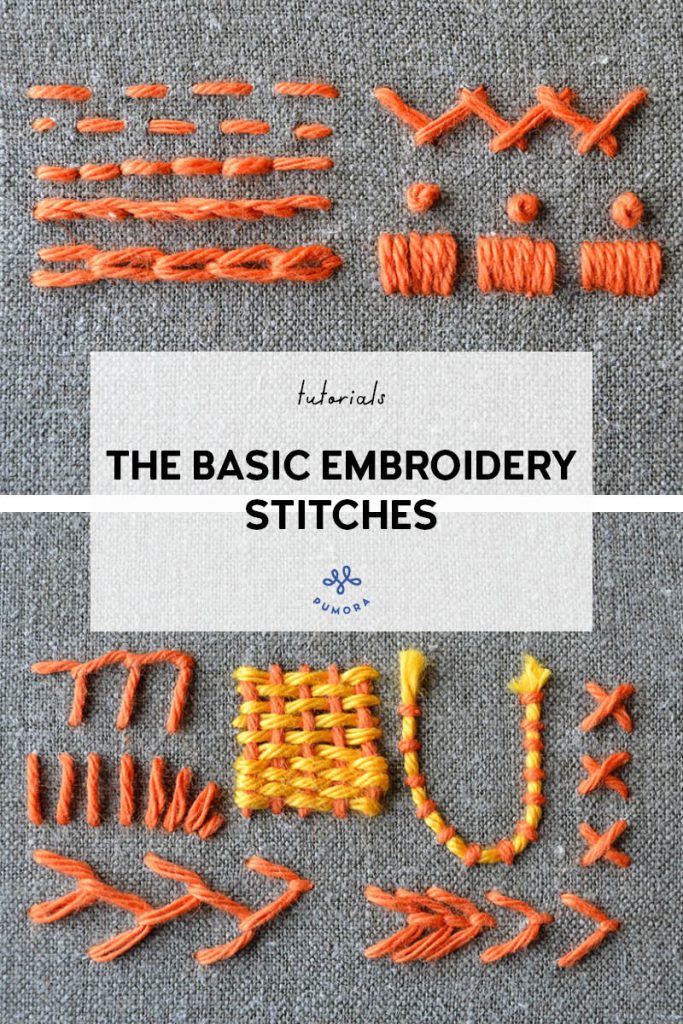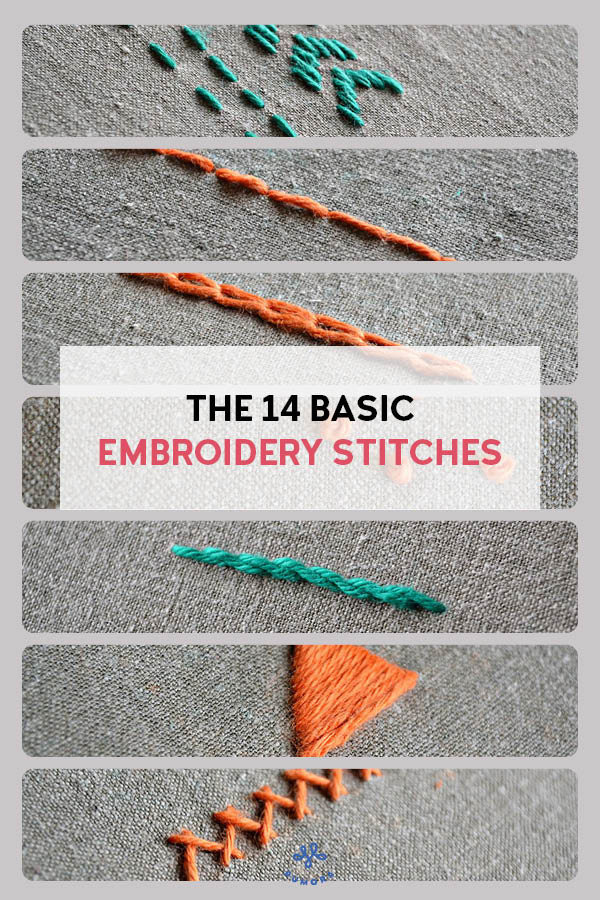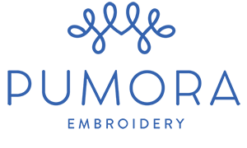Learning new hand embroidery stitches can seem daunting at first glance. There are over 300 of them and you can alter each of them. However, there are some basic stitches that many modern embroidery patterns use. If you master them, you can stitch most of the modern embroidery patterns! If you tackle learning them one stitch at a time you will be able to stitch everything you want soon!
How many embroidery stitches are there?
Over the centuries, many embroidery stitches were developed all over the world. With all the variations, there are easily more than 300 hand embroidery stitches. Each of them can be altered in width, length, and materials to create a different look, too. This makes hand embroidery so versatile and creative.
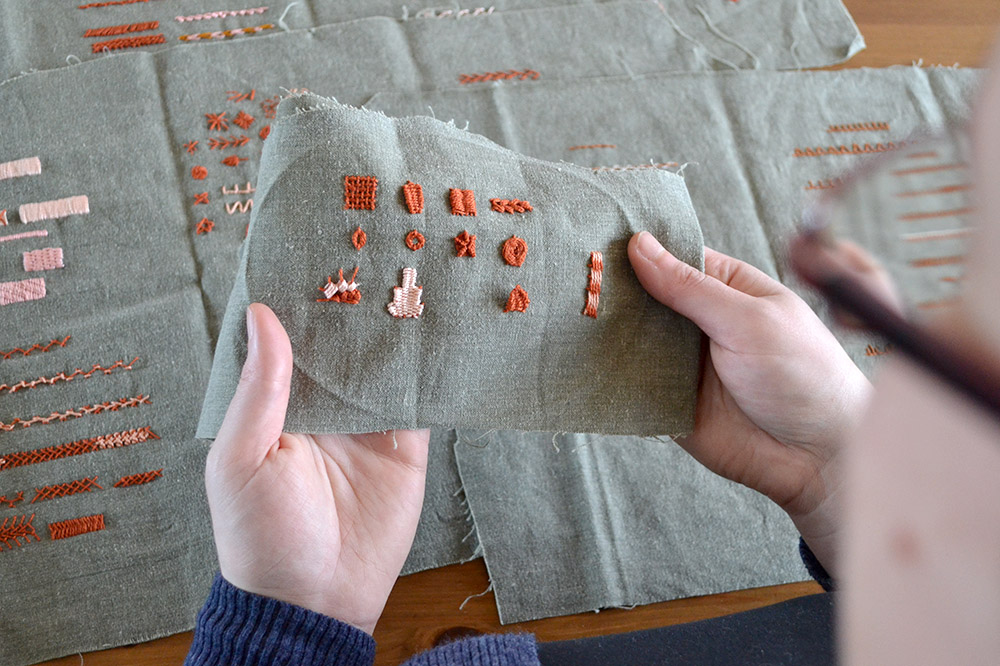
How many embroidery stitches do you need to know?
There are many embroidery stitches that you can learn but you only need to know a handful of embroidery stitches. Having down 5 stitches is more than enough to get good results. With two stitches for lines and letters, one stitch for filling, and two specialty stitches you can create a variety of embroidery projects.
What are the basic hand embroidery stitches?
The basic embroidery stitches are stitches that are the head of a stitch family. These stitches define the stitch type or category of the entire family. A stitch family is a group of stitches that share a certain feature even though they might look very different at first sight. The basic embroidery stitches are:
- running stitch
- back stitch
- blanket stitch
- chain stitch
- chevron stitch
- cross stitch
- feather stitch
- fishbone stitch
- fly stitch
- herringbone stitch
- knots
- satin stitch
- stem stitch
- straight stitch
- weave stitch
- other stitches
You see, there are 14 stitch families and a ‘family’ for all stitches that are so special they don’t resemble any of the others. In this article, you’ll find all of the basic hand embroidery stitches with their tutorials below. I started with the most important embroidery stitches for beginners so that it is easier for you to decide which ones you really need to learn first.
If you are a beginner and you need more information on how to start and end threads, choice of materials, etc. this beginner embroidery post might help you a lot. In it, you’ll find all the beginner questions answered and more. Also, all of the stitches shown here are available as video tutorials on my Youtube channel.
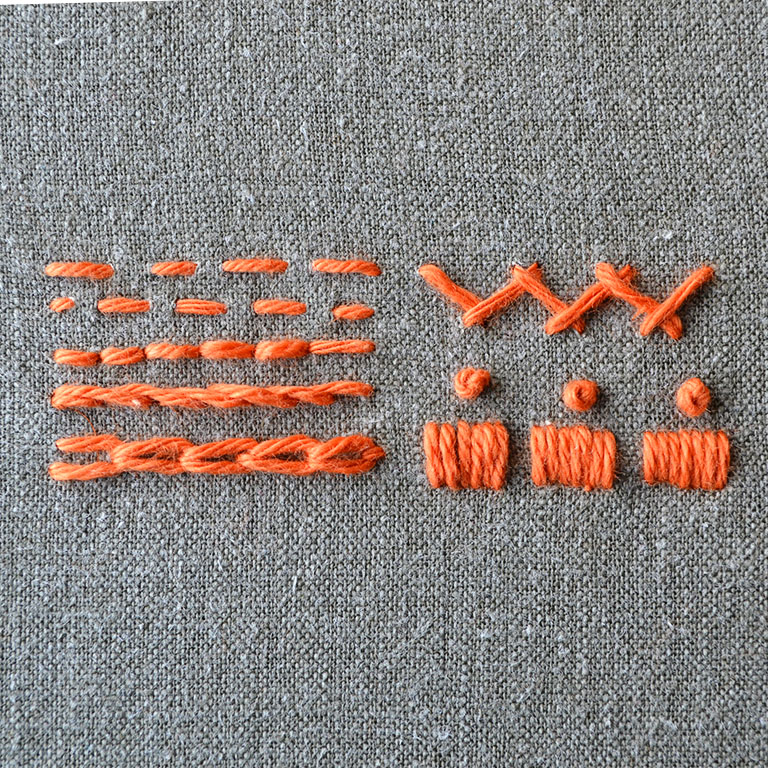
You are currently viewing a placeholder content from YouTube. To access the actual content, click the button below. Please note that doing so will share data with third-party providers.
More InformationThe basic hand embroidery stitches
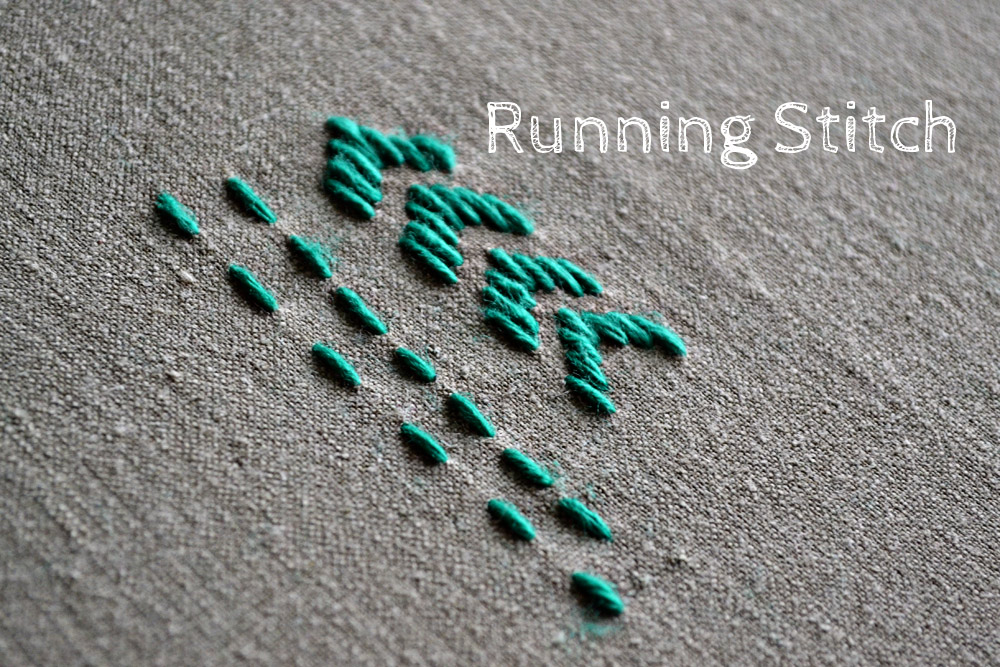
Running stitch
The running stitch probably is the most simple and basic embroidery stitch. Yet you can achieve the most intriguing patterns or minimalistic line stitching. It is worked in a simple up and down motion. The running stitch is the main embroidery stitch for Japanese Sashiko embroidery and many darning techniques.
You can learn how to do the running stitch in this step-by-step tutorial.
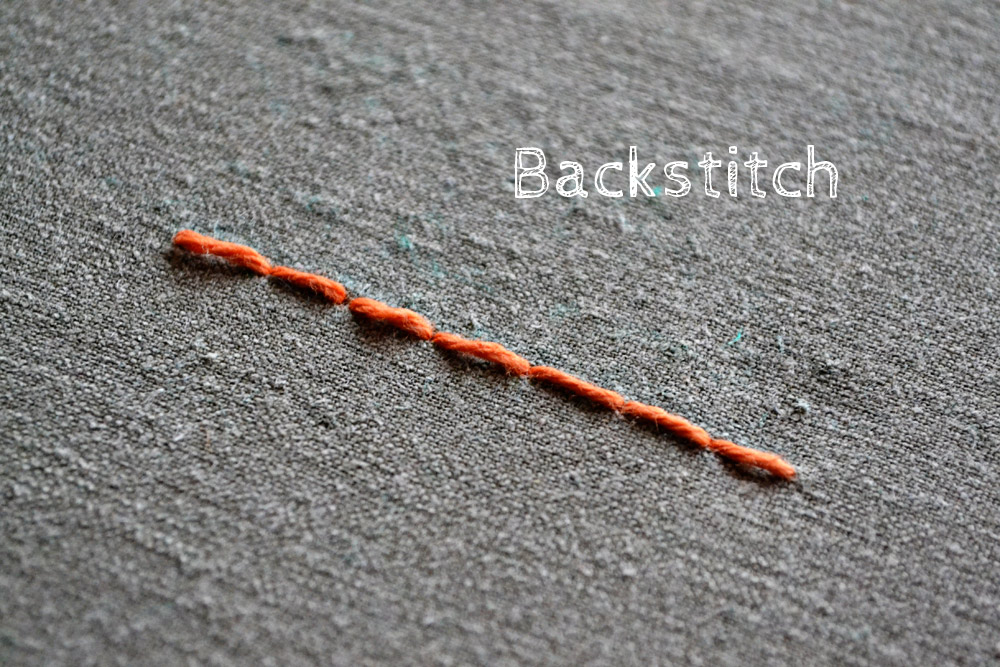
Back stitch
Back stitch is probably the most popular stitch in beginner embroidery. It’s neat and versatile and you can stitch your way through all the outline embroidery patterns out there. The back stitch is worked from right to left. It is always stitched backward to the previous stitch.

Chain stitch
The chain stitch can be used as a line stitch or to fill whole areas with embroidery. You can substitute back stitch with chain stitch in most line stitching patterns easily. The chain stitch is worked in loops that are then secured by the next loop or a stitch.
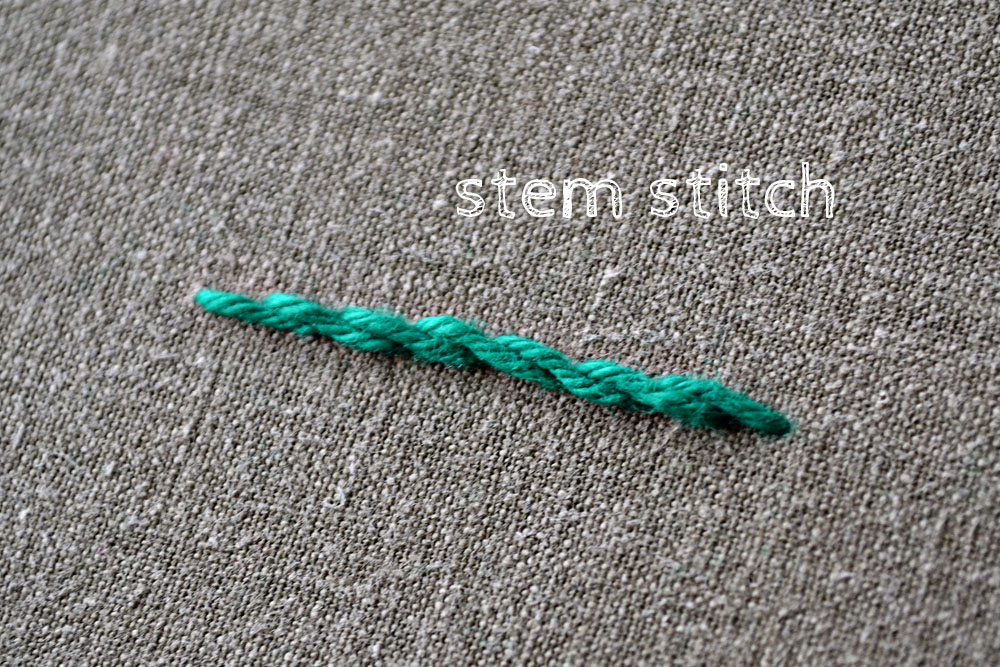
Stem stitch
The stem stitch resembles a rope. The slanting segments make this stitch blend the single stitches into a smoother line than the more distinct segments of back stitch or chain stitch. The stem stitch is worked from left to right. The individual stitches are longer and worked offset to the previous one.
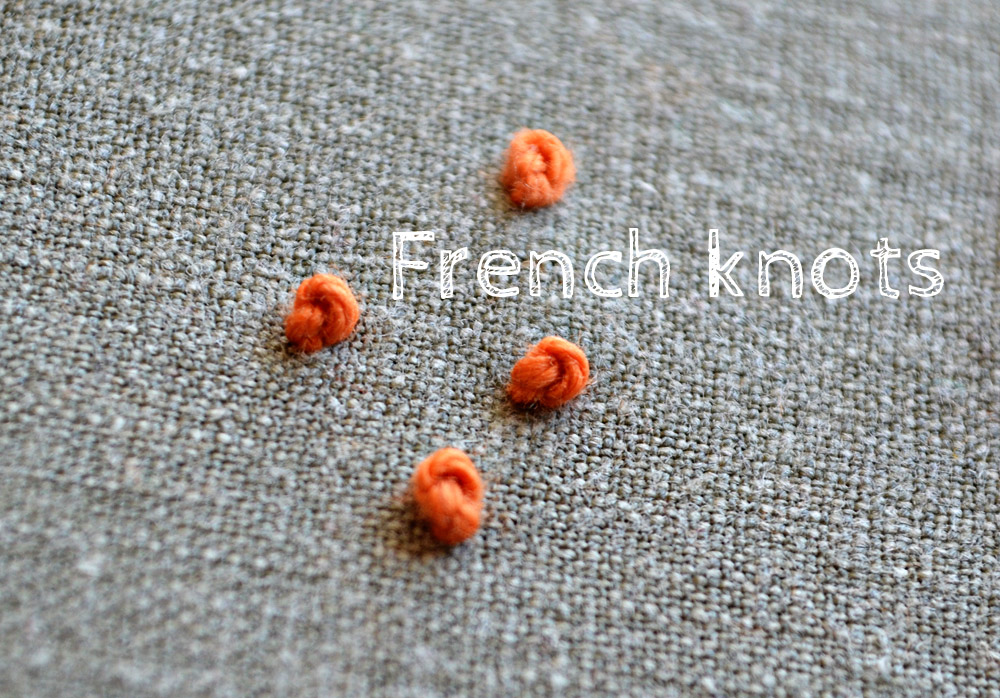
French knots
French knots are part of the knotted stitches family and are often used to accentuate parts of embroidery. They form a very textured surface if clouded together but look great scattered around, too. To make a french knot, wrap the thread around your needle 1-3 times and enter it into the fabric slightly on the side of where the thread exits the fabric.

Satin stitch
The satin stitch is widely used as a fill stitch. The name comes from the smooth surface similar to the surface of the fabric called satin. To embroider the satin stitch, set up multiple stitches parallel to each other along your shape to fill out.
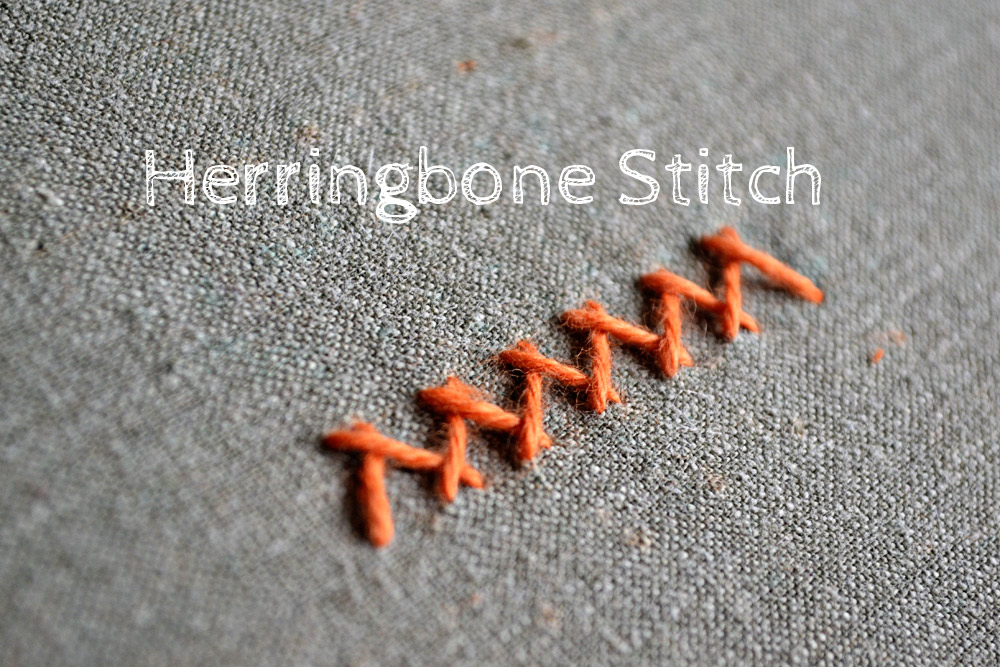
Herringbone stitch
The herringbone stitch is a crossed stitch. It’s commonly used to fill areas with a low amount of waste yarn in the back. To embroider the herringbone stitch make sets of 2 stitches that are worked so that they cross at the top and bottom of the line.
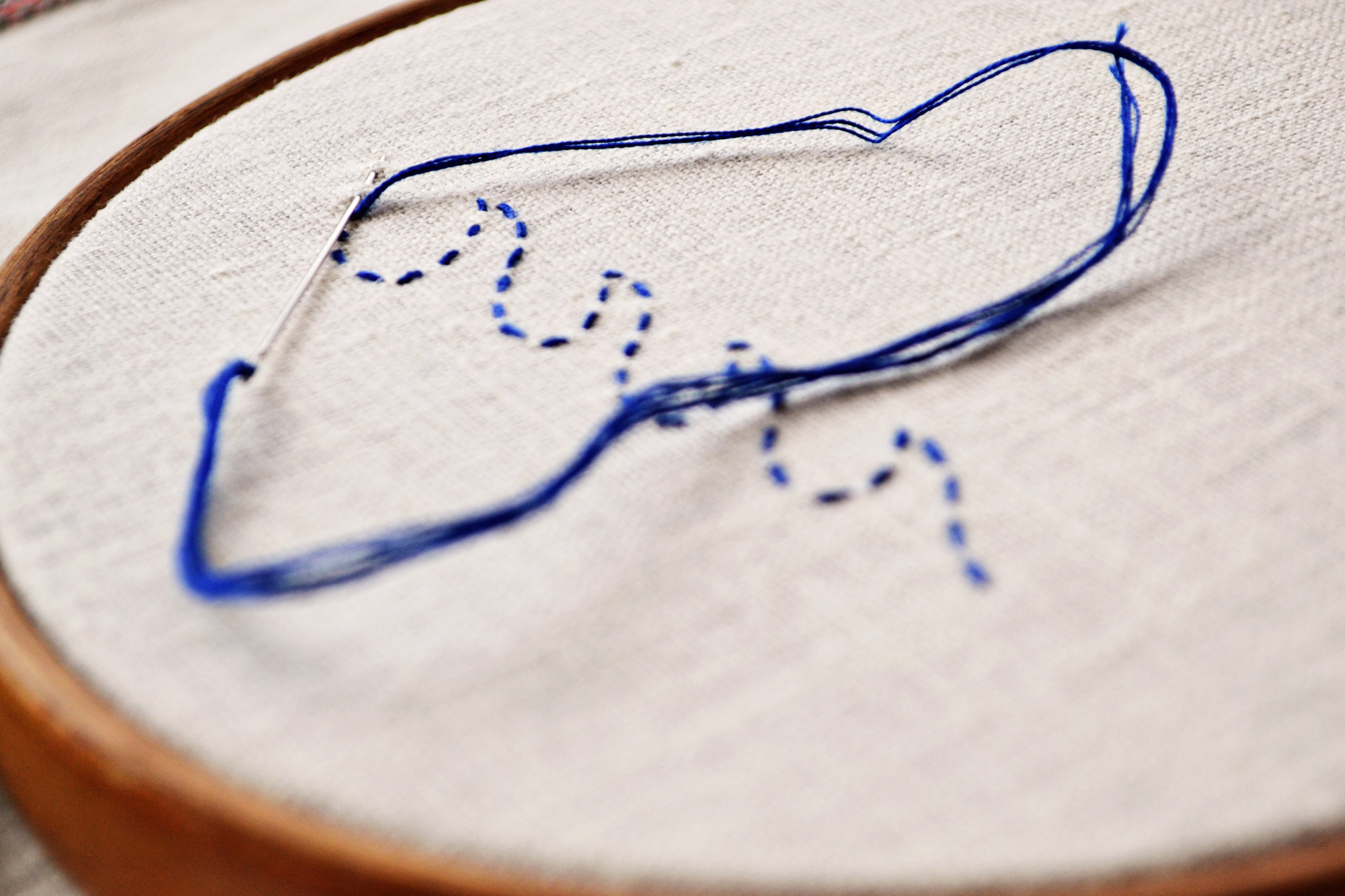
The Beginner guide to embroidery
Stop struggling to find your stride while stitching.
Everything you need to know as a beginner in one ebook.
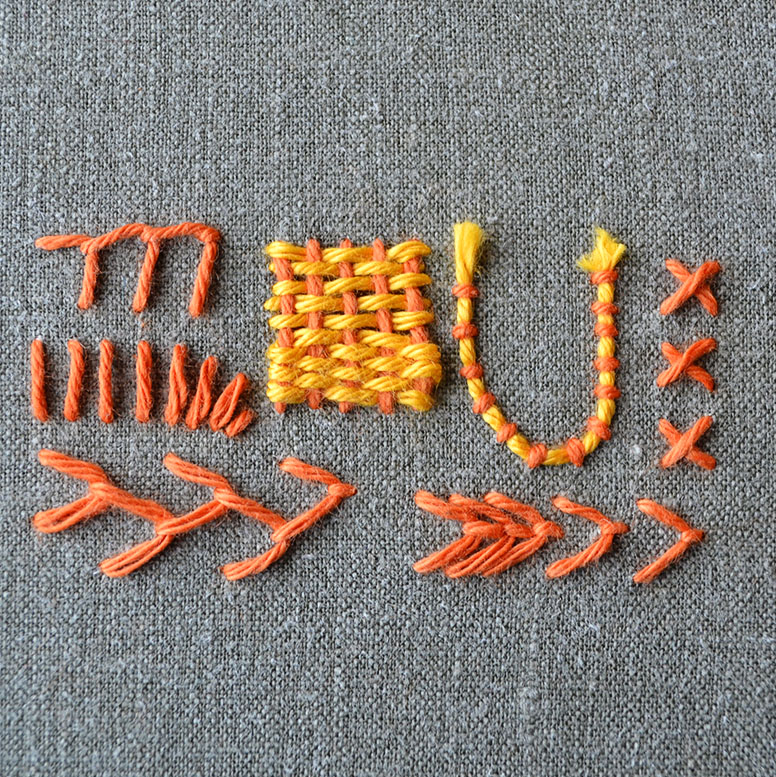
More hand embroidery stitches
Are you still eager to learn more stitches? The following hand embroidery stitches are also basic but not as important as the 7 stitches you saw in the first half of this post. Still, they are good to know and in some cases pretty awesome for special things like embroidering flowers or leaves.

Blanket stitch
The blanket stitch is often used for hemming blanket edges. Maybe you have/had a baby blanket that was hemmed this way, too? This hand embroidery stitch is worked from left to right. Imagine two parallel lines and stitch loops from the bottom line to the top.
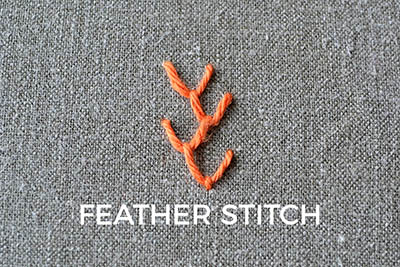
Feather stitch
The feather stitch has a long tradition in plant embroidery. It’s so easy to mimic different twigs, leaves, or water plants with this marvelous hand embroidery stitch. It is worked from the top down in loops holding each other. Other than with chain stitches, the feather stitch is going left and right instead of a continuous line.
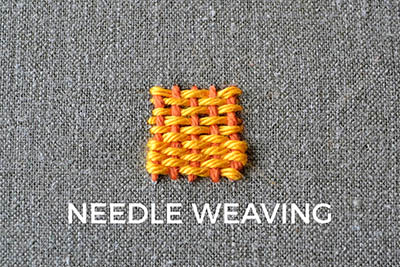
Needle Weaving
Being a cross-over between embroidery and weaving, needle weaving offers a lot of variations in how you can weave the threads in. A variation that gained a lot of popularity in flower embroidery is the woven rose – or woven spider wheel.
Make pretty weave stitches and roses with this step-by-step tutorial.
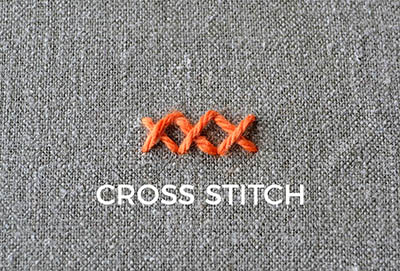
Cross stitch
The cross stitch is probably the one stitch that almost everybody has stitched once in their life at school. It is also the term many people say when they actually mean hand embroidery. Cross stitches are sets of 2 stitches that are worked across each other. They are used in counted embroidery or spread freely like in this project.
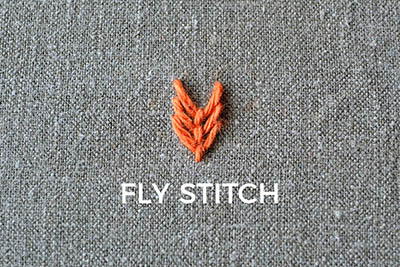
Fly stitch
The fly stitch can be used as a detached stitch for scales, flying birds in the distance, and other things with a half-circle or oval shape. The connected version is great for twigs or flower stems with tiny leaves. I like to use it for branches of fir in Christmas embroideries. The fly stitch is worked from the top down. Make loops that are wide open and secure each one individually with a longer stitch.
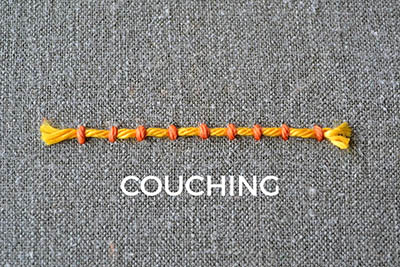
Couching
For couching, a surface material is attached to the fabric with a thread. The surface material can be anything! Dried flower stems, feathers, metallic threads or wire, wooden sticks, thick/thin/loopy/fluffy yarn, or simple embroidery floss.
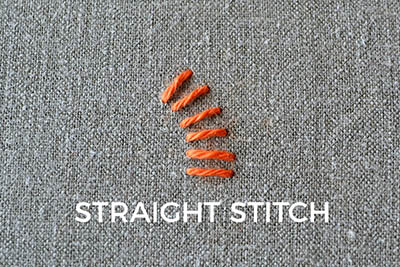
Straight stitch
A straight stitch is like a line you draw with a pencil – you can make anything with it. Depending on how you arrange them, how long you make them, or how short, the straight stitch can be everything you want it to be. In the straight stitch family, there are lots of interesting shapes you can discover.
My recommendation: Dropcloth samplers
Rebecca Ringquist has been creating embroidery samplers for many years and they are a feast for the eyes! I highly recommend her embroidery kits and preprinted samplers.
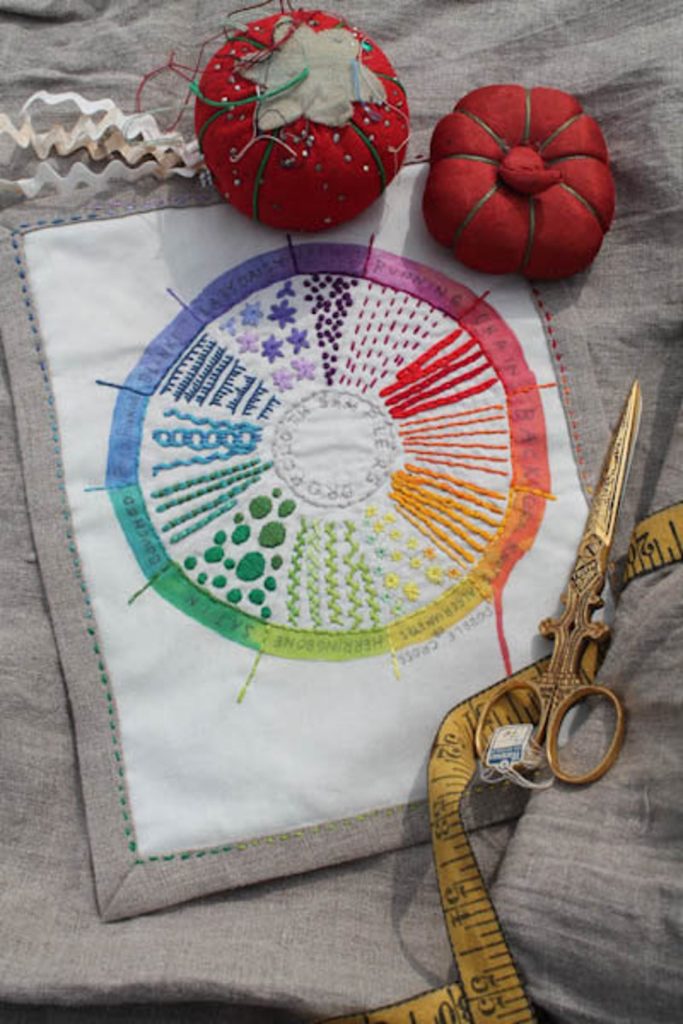
The drop cloth embroidery sampler
Rebecca Ringquist’s approach to embroidery sampler is so unique and pretty. She has created a lot of different playful samplers that make it very fun to learn new stitches. She has a monthly subscription sampler and many individual ones, too.
If you want to dabble into learning new embroidery stitches I highly recommend her color wheel sampler!
Which embroidery stitches are the most difficult to make and why?
So, now that we have covered the basic hand embroidery stitches, maybe you wonder what the most difficult stitches are? In hand embroidery, there are a lot of knotted embroidery stitches that are very difficult to do and remember. One example is the plaited braid stitch. Also, there are embroidery stitches that need a lot of attention because you must weave up or down at certain areas and intertwine threads. One perfect example of this is the interlaced herringbone stitch.
However, don’t be discouraged by the more difficult stitches. For some people, one type of stitch is difficult and for others, they are a piece of cake. You never know until you have tried it. To help you with learning embroidery stitches easier, I created the stitch lexicon. It includes many video tutorials, too, so that you can watch and repeat what you see easier.
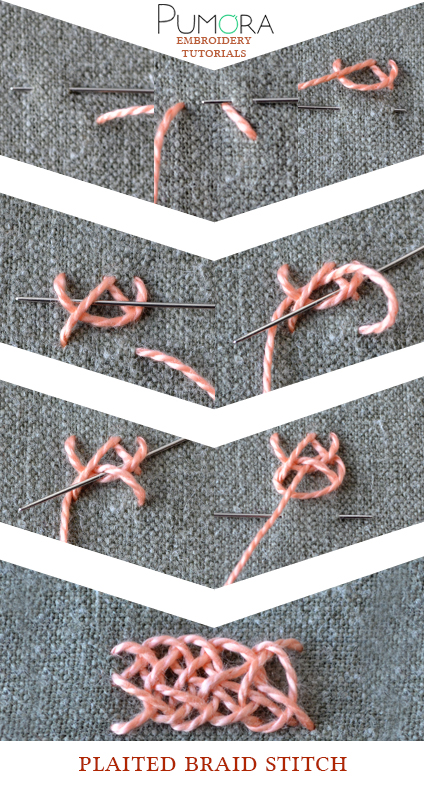
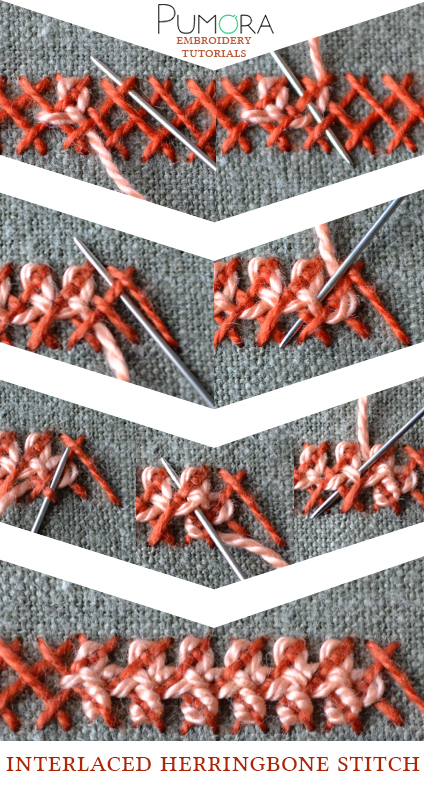
Video tutorials for all the stitches!
Some stitches are just not easy to follow in illustrated or photo form. Also, you might be learning better from watching someone do the thing. That is why I created the video stitch lexicon which is an addition to my regular stitch lexicon. Each Sunday there is a new stitch coming in over on my Youtube channel.
With over 90 embroidery stitch videos, you’ll get to know all the basic embroidery stitches and many more. Each video is short and precise – no fluff – so that you can focus and cut straight to the point without long intros to skip through. If you want to get notified when new stitches arrive, subscribe to the Pumora channel.
You are currently viewing a placeholder content from YouTube. To access the actual content, click the button below. Please note that doing so will share data with third-party providers.
More InformationWhat are embroidery stitches used for?
With hand embroidery, you can embellish clothes and other textiles, create home decoration and accessories, mend textiles or reinforce them to prevent holes. Popular uses of embroidery stitches are flower embroidery and leaf embroidery. Many of the stitches shown here work great for these purposes. Here is a list of embroidery stitches suitable for lines and letters and also embroidery stitches for filling areas.
Do you want more tips and tricks on hand embroidery?
Join the Tutorial Alert! It is a biweekly newsletter that contains information about new tutorials & articles on Pumora, tips & tricks, and promotional content like new embroidery patterns or special discount codes.
You’ll receive an email to confirm your subscription to the Newsletter. Please also check your Spam folder and mark the email as no Spam.
